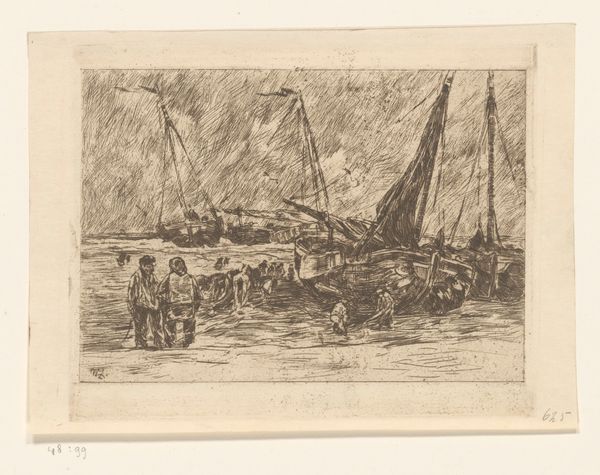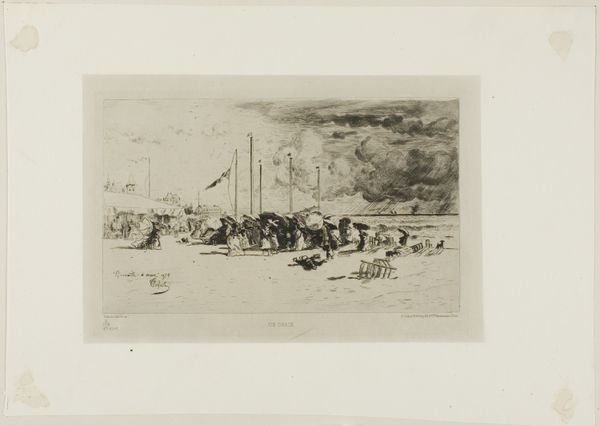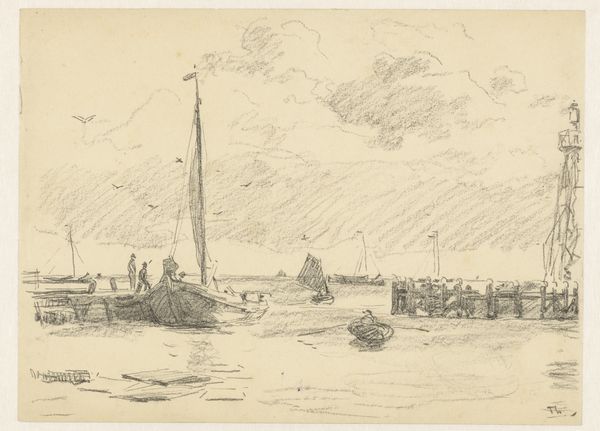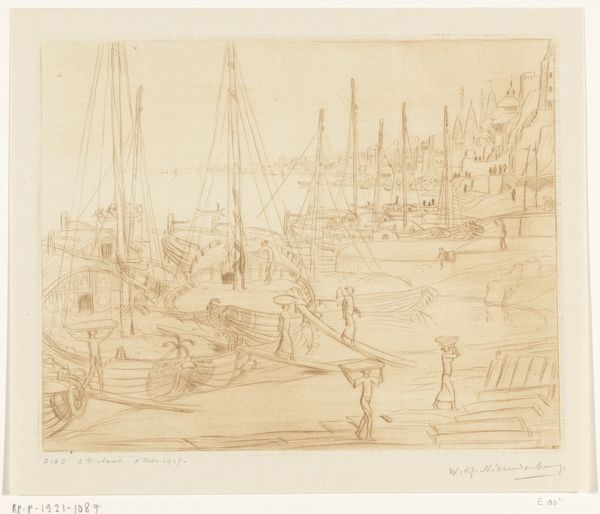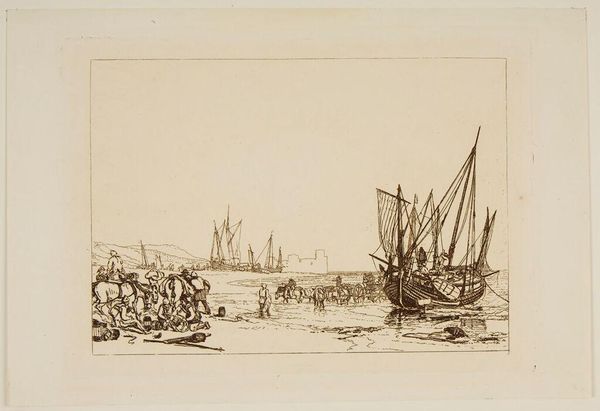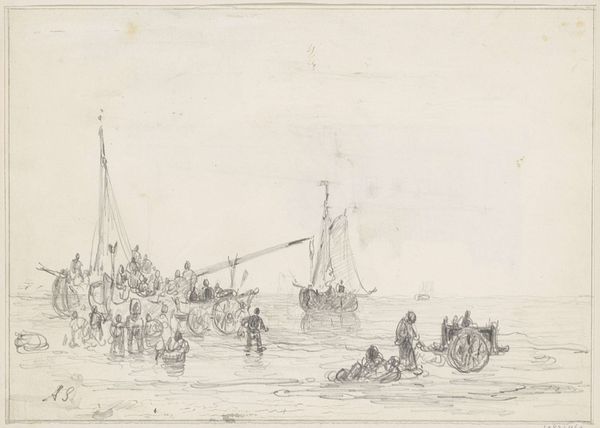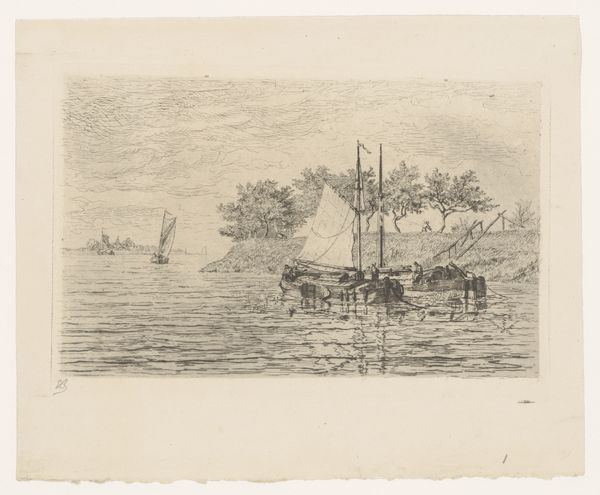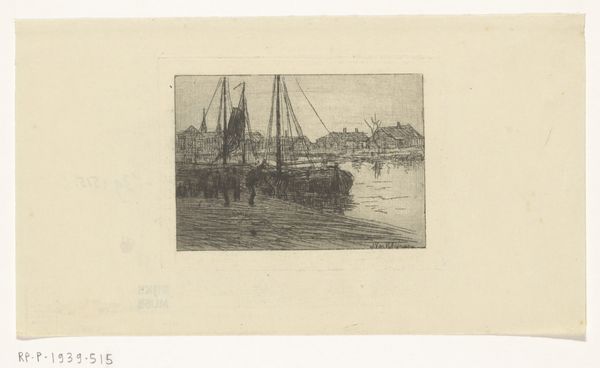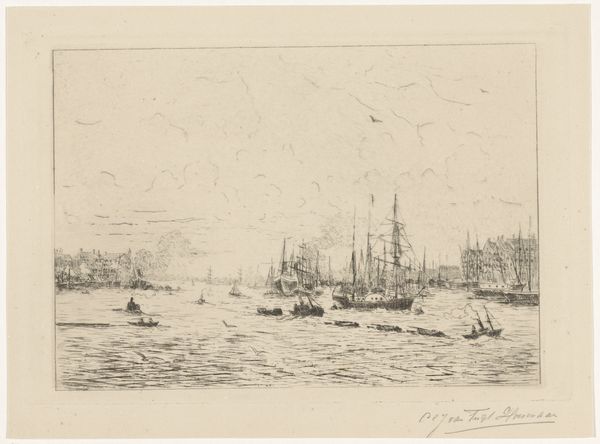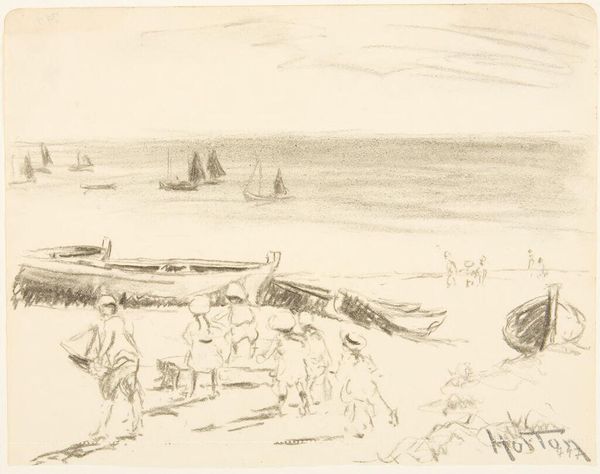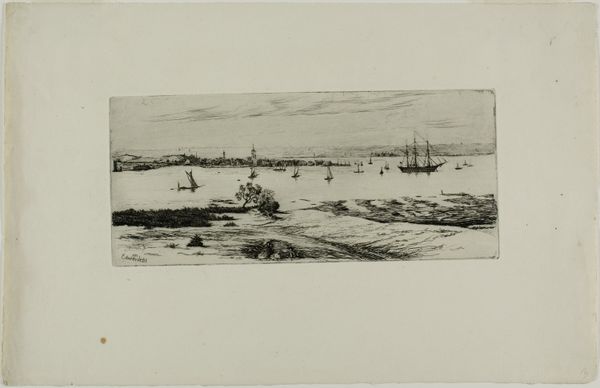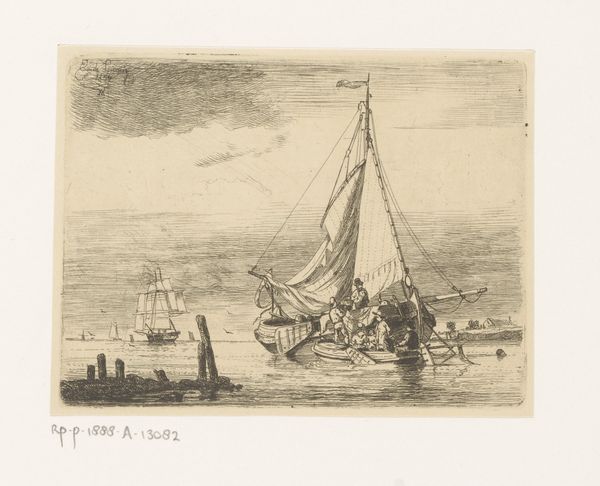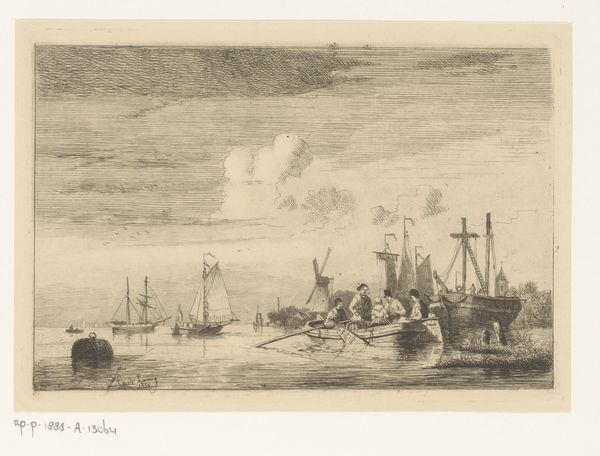
Gezicht op het Papendrechtsche Veer te Dordrecht 1884 - 1887
0:00
0:00
drawing, print, etching
#
drawing
# print
#
impressionism
#
etching
#
landscape
#
cityscape
Dimensions: height 99 mm, width 130 mm
Copyright: Rijks Museum: Open Domain
Editor: So this is 'Gezicht op het Papendrechtsche Veer te Dordrecht', or 'View of the Papendrecht Ferry at Dordrecht', an etching by James Abbott McNeill Whistler, made sometime between 1884 and 1887. It has this very sketchy quality, almost like a fleeting impression of a busy port. What’s your take on this scene, looking at it from a historical perspective? Curator: It’s tempting to see this as just a simple landscape, but Whistler was deeply engaged with the artistic and social currents of his time. This image represents more than just a view; it reflects a specific cultural moment when industrialization was transforming the landscape. How does Whistler represent that change? Editor: Well, the etching shows a bustling harbour with boats and figures. It feels very much about commerce and transportation, a real hub of activity, almost romanticized by Whistler's technique, somehow? Curator: Exactly. Whistler, like many artists, was interested in depicting modern life, but also in the formal qualities of art itself. The "sketchy quality" you mentioned emphasizes his focus on capturing the essence of a scene rather than photographic realism. Notice how he simplifies the forms and uses line to create a sense of atmosphere. How do you think this relates to the burgeoning industrialization around that time? Editor: I suppose by not portraying everything in meticulous detail, he acknowledges the changing pace of life and the move away from traditional, picturesque landscapes? Is it a celebration or a critique? Curator: It's intentionally ambiguous, reflecting a period of social and economic upheaval. It is more than simply depicting progress; it captures a sense of change. It acknowledges that everything solid might soon become air. Whistler gives agency to the viewer, not explicitly guiding toward praise or criticism, but letting the image simply be a symbol. What do you think that the placement of the figures at the pier does for the image? Editor: That is thought-provoking! They almost seem like witnesses to this transformation. I now understand this print carries far more meaning about a very specific cultural shift that he saw. Curator: Absolutely, looking at art through that lens offers richer appreciation.
Comments
No comments
Be the first to comment and join the conversation on the ultimate creative platform.
